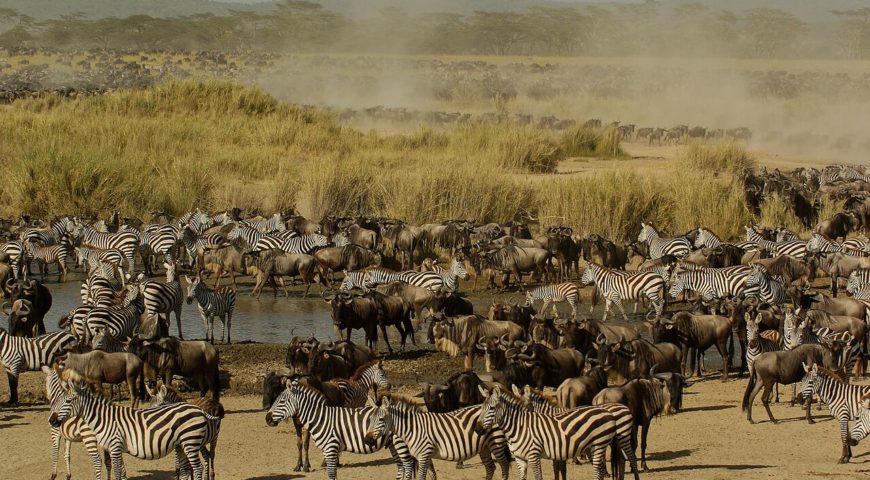
The Greatest Show on Earth: Migration of the Wildebeest
Each year, over a million wildebeest and lesser numbers of zebra and Thomson’s Gazelle trek north toward the Maasai Mara plains from the southern Serengeti in Tanzania and this is known as The Greatest Show on Earth. The wildebeest usually begin their journey in late March, arriving at the Mara plains in late June. The journey is long and perilous. Lions, hyenas, and other hunting species are a constant threat, and crocodiles eagerly await the herds when they cross the Mara river. The animals also have to battle heat and fatigue.The spectacle of the migration has been described as “the greatest wildlife show on earth“. One Kenya safari veteran says the “migration is an incredible spectacle but what is more interesting is seeing the various predators as they follow the
migration. You realize you are just a small piece of a wonderful natural puzzle.”

Here are a few fun facts about wildebeest and their migration that you may not be aware of.
Wildebeest Calves Are Fast Learners
Wildebeest calves can stand up by themselves and run within minutes of being born. Calves quickly develop the ability to follow their mother and can run at top speed within weeks. These survival skills are necessary for young calves, as young wildebeest are an inviting target for the big cats in the bush and also hyena.
Wildebeest Use Swarm Intelligence
How do thousands and thousands of wildebeest coordinate their movements on their treks to and from the Mara? Researchers believe the animal relies on what is known as “swarm intelligence”. The animals collectively solve problems like where to cross a river or what route to take. There isn’t centralized leadership, but the animals work together as a team, like when some herd members act as guards while others sleep at night.

Wildebeest Are Good Runners
Running wildebeest can reach speeds of 40 or 50 miles an hour, depending on the study. That’s faster than a deer or grizzly bear, and almost as fast as a Thomson’s gazelle. It’s still not fast enough to outrun lions or cheetah over a short distance. and this could be the greatest show if can you watch.
Not All Wildebeest Make the Migration
Contrary to popular belief, not all wildebeest are migratory animals. There are resident herds who stay close to home in both the Maasai Mara and Tanzania and don’t move between the game reserves.
Wildebeest Birthing Season
Most female members of the migrating herds give birth in January or February. This actually helps the herds’ survival rate because species that hunt the wildebeest get full. If wildebeest birthing season were spread out over a longer period, more of them would perish from predators. The average wildebeest live until 20 years of age.
Contact us. We’d love to hear from you for Reservation and Information.
Phone: 714-985-3465
Email: info@bestsafaris.com


